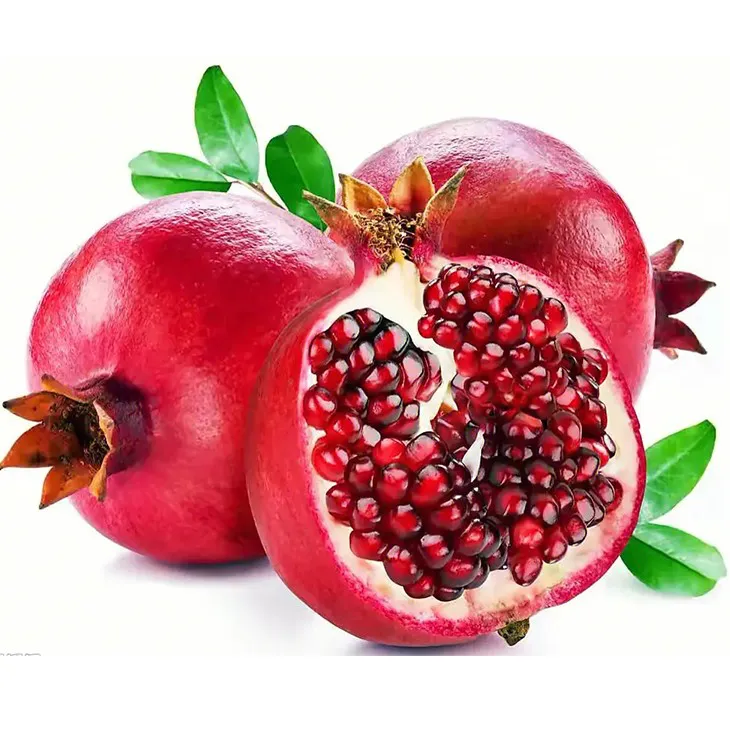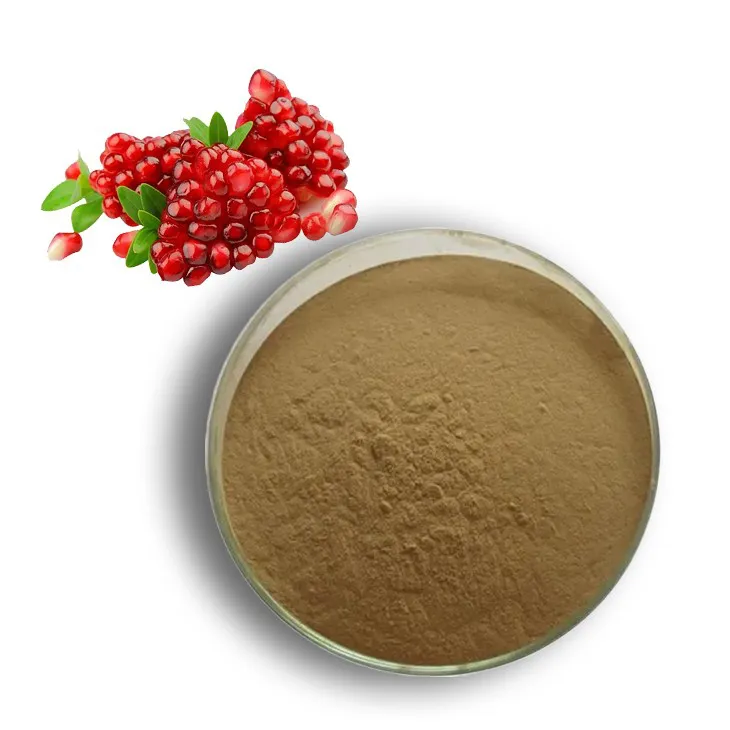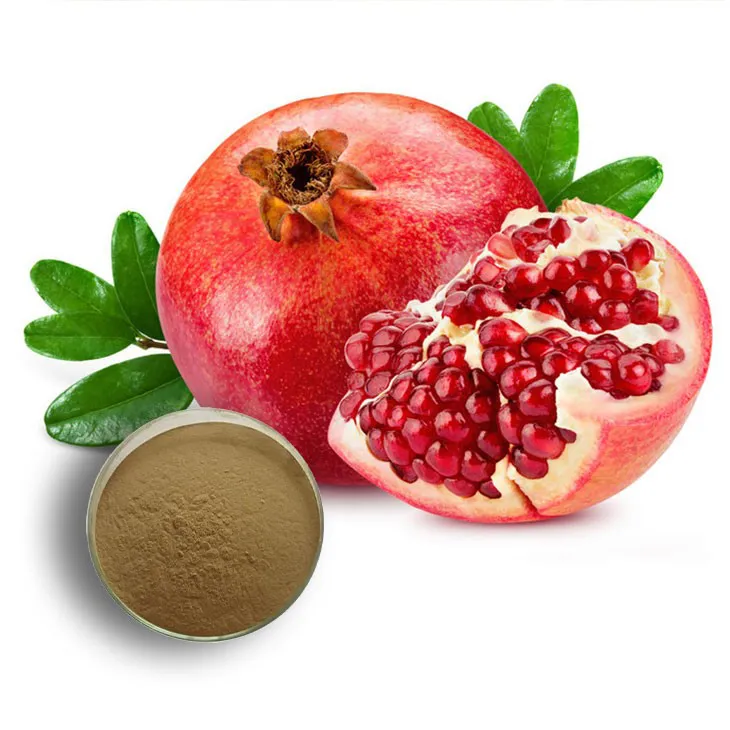- 0086-571-85302990
- sales@greenskybio.com
Optimal Bioavailability of Pomegranate Extract.
2024-11-27

1. Introduction
Pomegranate, a fruit known for centuries for its nutritional and medicinal properties, has seen its extract gain significant popularity in recent years. Pomegranate Extract is rich in a variety of bioactive compounds such as polyphenols, flavonoids, and tannins. These compounds are associated with numerous potential health benefits, including antioxidant, anti - inflammatory, and anti - cancer properties. However, the effectiveness of Pomegranate Extract in promoting health is not solely dependent on its chemical composition but also on its bioavailability.
Bioavailability refers to the proportion of a substance that enters the circulation and is available at the site of action. In the case of Pomegranate Extract, achieving optimal bioavailability is crucial for maximizing its potential health - promoting effects. This article will explore the various factors that influence the bioavailability of pomegranate extract, including extraction methods, formulation types, and the influence of co - consumed substances.

2. Extraction Methods and Bioavailability
The method used to extract pomegranate extract can have a significant impact on its bioavailability. There are several common extraction methods, each with its own advantages and disadvantages.
2.1 Solvent Extraction
Solvent extraction is one of the most widely used methods. Organic solvents such as ethanol or methanol are often used to extract the bioactive compounds from pomegranate. This method can effectively extract a wide range of compounds. However, the choice of solvent can affect the bioavailability of the extract. For example, if the solvent is not completely removed during the extraction process, it may have toxic effects when consumed, and it can also interfere with the absorption of the bioactive compounds in the body.
2.2 Supercritical Fluid Extraction
Supercritical fluid extraction, using substances such as supercritical carbon dioxide, is an emerging and more advanced extraction method. This method has several advantages in terms of bioavailability. Firstly, it can operate at relatively low temperatures, which helps to preserve the integrity of the bioactive compounds. Secondly, supercritical carbon dioxide is non - toxic and can be easily removed from the extract, reducing the risk of toxicity and interference with absorption. Studies have shown that pomegranate extract obtained by supercritical fluid extraction may have higher bioavailability compared to solvent - extracted extracts.
2.3 Enzymatic Extraction
Enzymatic extraction involves the use of specific enzymes to break down the cell walls of pomegranate and release the bioactive compounds. This method can be more selective in extracting certain compounds, which may be beneficial for bioavailability. For example, enzymes can target specific polysaccharides or proteins that may be associated with the bioactive compounds, facilitating their release and subsequent absorption in the body. However, enzymatic extraction requires careful control of enzyme activity and reaction conditions to ensure optimal extraction and bioavailability.

3. Formulation Types and Bioavailability
The way pomegranate extract is formulated can also play a crucial role in its bioavailability.
3.1 Capsules and Tablets
Capsules and tablets are common forms of pomegranate extract supplements. These formulations offer convenience and ease of consumption. However, the bioavailability of pomegranate extract in capsules and tablets can be affected by factors such as the disintegration time and the presence of excipients. Excipients are substances added to the formulation to improve its physical properties, such as flowability and compressibility. Some excipients may interact with the pomegranate extract and reduce its bioavailability. Therefore, it is important to choose high - quality capsules and tablets with appropriate formulations to ensure optimal bioavailability.
3.2 Liquid Formulations
Liquid formulations, such as pomegranate juice extracts or tinctures, may offer different bioavailability characteristics compared to solid forms. Liquid formulations can be more easily absorbed in the digestive tract, especially for those with compromised digestive function. However, liquid formulations also face challenges such as stability and shelf - life. They may require the addition of preservatives, which may interact with the pomegranate extract and affect its bioavailability. Additionally, the concentration of the extract in liquid formulations needs to be carefully controlled to ensure effective absorption without causing adverse effects.
3.3 Nano - Formulations
Nano - formulations are an emerging area in the field of pomegranate extract delivery. Nano - particles can be designed to encapsulate pomegranate extract, protecting it from degradation in the digestive tract and enhancing its absorption. By reducing the size of the particles to the nano - scale, the surface area of the extract is increased, which can improve its interaction with the intestinal mucosa and facilitate its uptake into the cells. Studies have shown that nano - formulated pomegranate extract can exhibit significantly improved bioavailability compared to traditional formulations.

4. Influence of Co - consumed Substances on Bioavailability
The bioavailability of pomegranate extract can also be influenced by other substances that are consumed simultaneously.
4.1 Dietary Fibers
Dietary fibers are an important component of the diet. When consumed together with pomegranate extract, they can have both positive and negative effects on bioavailability. On one hand, some dietary fibers can bind to certain compounds in the pomegranate extract, reducing their absorption. For example, soluble fibers may form complexes with polyphenols, preventing their uptake by the intestinal cells. On the other hand, dietary fibers can also slow down the transit time in the digestive tract, allowing more time for the absorption of the pomegranate extract. Therefore, the balance between these two effects needs to be considered when consuming pomegranate extract with high - fiber foods.
4.2 Fatty Acids
Fatty acids can play a role in enhancing the bioavailability of pomegranate extract. Some studies have shown that when pomegranate extract is consumed with fatty acids, the lipophilic nature of the bioactive compounds in the extract can be exploited. Fatty acids can help in the emulsification and solubilization of the compounds, facilitating their absorption through the intestinal membrane. For example, omega - 3 fatty acids have been shown to increase the absorption of certain polyphenols in pomegranate extract. However, excessive intake of fatty acids may also lead to adverse health effects, so a balanced intake is essential.
4.3 Other Phytochemicals
When pomegranate extract is consumed as part of a diet rich in other phytochemicals, there can be complex interactions that affect bioavailability. For example, if consumed with other antioxidant - rich fruits or vegetables, there may be synergistic or antagonistic effects. Synergistic effects may occur when the different phytochemicals work together to enhance the antioxidant or other health - promoting properties, which may also indirectly improve the bioavailability of the pomegranate extract. Antagonistic effects, on the other hand, may lead to competition for absorption sites or chemical interactions that reduce the bioavailability of the extract.

5. Strategies for Optimizing Bioavailability
Based on the above factors, several strategies can be employed to optimize the bioavailability of pomegranate extract.
5.1 Selection of Appropriate Extraction Method
When choosing an extraction method, consider the advantages and disadvantages of each method in terms of bioavailability. For example, if high - quality and highly bioavailable pomegranate extract is desired, supercritical fluid extraction may be a better choice due to its ability to preserve the integrity of the bioactive compounds and its non - toxic nature. However, cost and availability of equipment also need to be considered. In some cases, a combination of extraction methods may be used to achieve the best results.
5.2 Selection of Optimal Formulation
Depending on the individual's needs and health conditions, the appropriate formulation of pomegranate extract should be selected. For those with digestive problems, liquid formulations may be more suitable. For those who prefer convenience and long - term storage, capsules or tablets may be a better option. In addition, nano - formulations show great potential for improving bioavailability and should be further explored for commercial applications.
5.3 Consideration of Dietary Combinations
When consuming pomegranate extract, be aware of the dietary combinations. Avoid consuming it with high - fiber foods at the same time if possible, or adjust the intake of dietary fibers to balance their effects on bioavailability. Incorporate healthy fatty acids, such as omega - 3 fatty acids, into the diet to enhance the bioavailability of the extract. Also, be mindful of the overall diet rich in phytochemicals and strive to achieve a balanced and synergistic combination.
6. Conclusion
In conclusion, achieving optimal bioavailability of pomegranate extract is essential for maximizing its potential health - promoting effects. The extraction method, formulation type, and co - consumed substances all play important roles in determining the bioavailability of pomegranate extract. By understanding these factors and implementing appropriate strategies, we can optimize the use of pomegranate extract, making it a more effective tool in promoting health and preventing diseases.
FAQ:
Question 1: What are the common extraction methods of pomegranate extract?
Common extraction methods of pomegranate extract include solvent extraction, such as using ethanol or water - based solvents. Supercritical fluid extraction is also used sometimes. Solvent extraction is relatively straightforward and cost - effective, while supercritical fluid extraction can produce a purer extract with potentially better quality in terms of bioactive compounds.
Question 2: How does the formulation type affect the bioavailability of pomegranate extract?
Different formulation types can have a significant impact on bioavailability. For example, if the pomegranate extract is formulated as a nanoparticle - based delivery system, it may enhance absorption due to the small size and increased surface area. On the other hand, if it is in a simple powder form, the bioavailability might be lower as it may not be as easily absorbed by the body compared to a more advanced formulation.
Question 3: What substances can enhance the bioavailability of pomegranate extract when co - consumed?
Some substances like certain vitamins (e.g., vitamin C) and fatty acids may enhance the bioavailability of pomegranate extract when co - consumed. Vitamin C can act as an antioxidant booster and may help in better absorption and utilization of the bioactive components in pomegranate extract. Fatty acids can interact with the extract components and improve their solubility and subsequent absorption in the body.
Question 4: Are there any side effects related to improving the bioavailability of pomegranate extract?
Generally, if proper extraction and formulation methods are followed, there are no significant side effects directly related to improving bioavailability. However, excessive consumption of pomegranate extract, even with enhanced bioavailability, may lead to some mild gastrointestinal discomfort in some individuals, such as nausea or diarrhea. It is important to follow recommended dosage guidelines.
Question 5: How can one measure the bioavailability of pomegranate extract?
Bioavailability of pomegranate extract can be measured through various methods. One common approach is to measure the concentration of the bioactive compounds in the blood or plasma over a period of time after consumption. Another method is to study the excretion patterns of the extract components in urine. Pharmacokinetic studies are often used to analyze these parameters and determine the extent and rate of absorption, distribution, metabolism, and excretion of the pomegranate extract in the body.
Related literature
- Bioavailability of Pomegranate Polyphenols: Current Knowledge and Future Perspectives"
- "Optimizing the Efficacy of Pomegranate Extract through Bioavailability Enhancement: A Review"
- "Factors Influencing the Bioavailability of Pomegranate - Based Nutraceuticals"
- ▶ Hesperidin
- ▶ Citrus Bioflavonoids
- ▶ Plant Extract
- ▶ lycopene
- ▶ Diosmin
- ▶ Grape seed extract
- ▶ Sea buckthorn Juice Powder
- ▶ Fruit Juice Powder
- ▶ Hops Extract
- ▶ Artichoke Extract
- ▶ Mushroom extract
- ▶ Astaxanthin
- ▶ Green Tea Extract
- ▶ Curcumin
- ▶ Horse Chestnut Extract
- ▶ Other Product
- ▶ Boswellia Serrata Extract
- ▶ Resveratrol
- ▶ Marigold Extract
- ▶ Grape Leaf Extract
- ▶ New Product
- ▶ Aminolevulinic acid
- ▶ Cranberry Extract
- ▶ Red Yeast Rice
- ▶ Red Wine Extract
-
Soy Extract
2024-11-27
-
Beetroot juice Powder
2024-11-27
-
Cassia Seed Extract
2024-11-27
-
Hops Extract
2024-11-27
-
Saffron Extract Powder
2024-11-27
-
Motherwort Extract
2024-11-27
-
Sea buckthorn oil
2024-11-27
-
Panax Ginseng Leaf Extract
2024-11-27
-
Giant Knotweed Extract
2024-11-27
-
Epimedium extract powder
2024-11-27





















